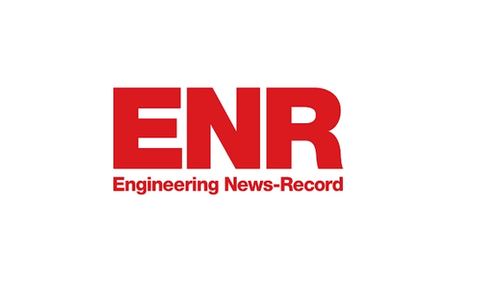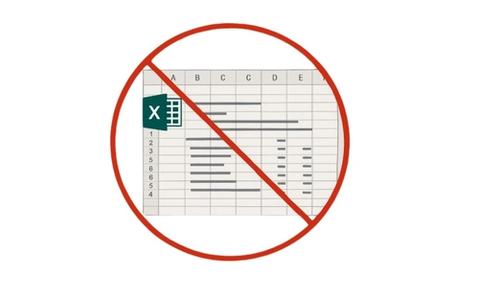Automating the Prequalification Process
July 18, 2014

Wouldn’t it be nice to let your subcontractors fill out your Prequalification form online so you don’t have to reenter any data? A year ago I wrote about automating the pre-construction process using bid invitation software. Since then, there has been a significant trend of general contractors streamlining their process of sending bid invites and addendum notices electronically as well as uploading plans and bid docs for their subs to download quickly and easily. The next phase of automation that is gaining steam is the Subcontractor Prequalification Process.
Why Prequalify Subs?
Mitigate risk, of course! Let’s face it, the success or failure of your project can boil down to the performance of your subcontractors. Failures are generally the result of poor workmanship, lack of a quality management team, or insufficient resources to properly perform the job. Some typical questions on a prequalification form might include: – State Contractor License Number – Years in business – Geographic areas willing to work – Scopes/trades – Certifications (MBE, WBE, etc) – Financial history and/or financial records – Bonding capacity – Insurance Certificate – EMR ratings – References
By spending a little time learning about your subcontractors before awarding contracts, you can determine how much risk you are willing to accept. The quandary, though, is how to find the time. Thankfully, there is a way to significantly reduce that time by automating the process.
The “Old Way”
The old way of gathering prequalification information was extremely labor intensive: emailing or faxing a questionnaire to subcontractors who in turn filled out the form manually, then scan/email/faxed back along with attachments such as an insurance certificate, certification form, etc. The GC then would need to enter all their updated company/contact information into their system, print the form and any attachments, and store them in a physical file.
The “New Way”of Automation
Now, new subcontractors can simply enter their company/contact info and answer the Prequalification Questionnaire directly on a GC’s website. Existing subs in a GC’s database can be sent a link to form with all their existing data already entered…all they need to do is update their info and answer any custom Prequal questions. Subs love this since it is much easier than having to rewrite all their info into a blank form every year. The GC then gets an email alert and can immediately view the sub’s info on their screen and decide to approve or disapprove the sub. The approved sub’s form and any attachments are stored in their record for retrieval quickly and easily…no need for paper copies in files/folders.
The Benefits of Automation
The main benefit of automating is the time savings for both the general contractor and subcontractor. GC’s no longer need to manually enter new subcontractor’s company/contact info or manually update existing info. In addition, they no longer need to print an incoming form and file it the old fashioned way. Subcontractors that have already supplied their company info never need to manually enter it again, and can edit or update their contact info. They also save time not having to print the form, re-type their info and then scan and email it back. Instead they do it all online!
Primus Builders in Atlanta has automated their Subcontractor Prequalification Process by using the PipelinePrequal™ module of PipelineSuite® for almost three years. Dave Davis, Chief Estimator remembers, “We would have to send them the form via “snail mail” or email and have them fill it out and return, we would then have to manually enter into Pipeline. The pains/inefficiencies would be the manual entry, not to mention filing/storing of the paperwork. Paperless is the future.”
Bilfinger (listed 67th in the ENR List of 400 contractors in 2014) has also been benefitting from utilizing PipelinePrequal™ for over two years. “Before PipelinePrequal™, we would send hard copies to contractors to complete,” comments April Pepple, Contracts Manager and Cost Engineer for Bilfinger. “Pipeline has allowed us to create a paperless system which is not only more effective; it is a cost savings to our company. Other drawbacks to the old process were the bogged down emails or kickbacks due to file size. It has offered us a more efficient and professional manner to gather contractors information. The system offers management tailored to your company’s needs.”
Taking action!
Automating your Prequalification Process can be quick and painless. The first step is finding the right software system. Some important features to look for include:
- The ability to customize and add your own questions.
- The option to embed the questionnaire into your website.
- The ability to create a simple “update your info” form to send out to subs so they can keep their company/contact info up to date.
- Technical support to help you create your custom form, or offer to create it for you.
- The capability to create as many different forms as you want and edit them any time.
- A system that allows your subs to upload documents such as insurance certificates.
- A 30-day trial version to compare with your current process.
The next step is to simply recreate your existing form using the software’s form creator “wizard”, which when finished, can be send out to subs in one click. The form can also be embedded into your company website easily (most website/IT persons have told me it only took them 15 minutes).
Contractors that are forward-thinking and move toward automating their prequalification process will save countless hours, and most importantly, will be able to better mitigate risk and improve the chances of success on their projects. The amazing thing they will realize is how fast, easy and painless it is converting their process to a paperless system.
About the Author: Rick is the President of PipelineSuite© which he founded in 2002. Rick is also a member of the American Society of Professional Estimators, Orange County Chapter 3. For more information, visit www.PipelineSuite.com.
This article was published in the July-August 2014 edition of Design Cost Data magazine.
Recent Posts

What is In-Line Editing in Construction Software?
October 22, 2025

ENR Article Highlights PipelinePrequal Software
March 15, 2024

PipelineSuite announces Embedded experience App in Procore
March 15, 2024

Three Ways to Reduce Subcontractor Bid Fatigue
September 22, 2025

4 Reasons to Ditch Excel for Bid Leveling and Bid Tabulation in Preconstruction
July 30, 2025


